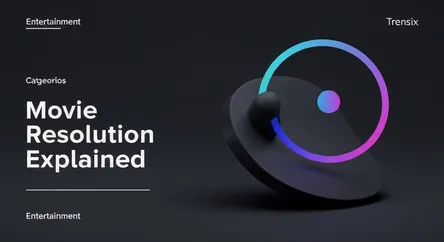Entertainment
Movie Resolution Explained

Discover what movie resolution means. Learn the difference between 1080p, 4K, and 8K and how it transforms your viewing experience with crisper details.
What is it?
Resolution in movies refers to the level of detail in the image, measured in pixels. A pixel is the smallest point of color in a digital picture. Common resolutions include Full HD (1920x1080 pixels), 4K Ultra HD (3840x2160 pixels), and now 8K (7680x4320 pixels). The higher the pixel count, the sharper and more detailed the image appears, whether on a cinema screen or a home television. This clarity is crucial for capturing the director's full visual intent.
Why is it trending?
The push for higher resolution is driven by technology and consumer demand for a more immersive experience. As televisions get larger, resolutions like 4K have become standard to prevent images from looking blurry. Streaming services like Netflix and Disney+ now boast extensive 4K libraries, making high-quality content more accessible than ever. Furthermore, filmmakers often shoot in 6K or 8K to capture maximum detail, providing more flexibility for visual effects and editing in post-production.
How does it affect people?
For viewers, higher resolution creates a more engaging and visually stunning movie experience. Details that are lost in lower resolutions, like the texture of a costume or a subtle facial expression, become crystal clear, making the film feel more realistic. This enhanced clarity can deepen immersion in the story. However, it also demands more powerful hardware, larger file sizes, and faster internet speeds for streaming, which are important factors for consumers when upgrading their home entertainment systems.